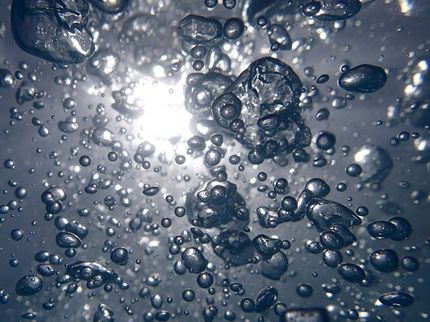New electrode materials for the oxidation of water
It’s all about good cooperation
By splitting water electrochemically, green hydrogen can be produced, which can be used as fuel, energy storage and for chemical reactions. This way, we can decrease our dependence on fossil resources and reduce greenhouse gas emissions. However, the electrolysis of water consumes a lot of energy. Especially the Oxidation reaction to oxygen at the anode is very energy-intensive.

So, it is all about good cooperation, not only in research, but also in catalysis (symbolic image).
sasint, pixabay.com
In order to efficiently split water, researchers at the Max Planck Institute for Chemical Energy Conversion in collaboration with researchers from the Technical University of Berlin, the RWTH Aachen University and the Federal Institute for Materials Research and Testing in Berlin have developed new electrode materials for the oxidation of water. Carbon electrodes are especially cheap, but deactivate over time, meaning they are not stable. For this reason, the researchers have developed carbon electrodes that also contain the transition metals manganese and iron. Both metals are inexpensive and earth abundant. The composition of the electrodes could be illuminated by a comprehensive characterization of the materials. The materials consist of carbon in the form of carbon nanotubes. The tubes are filled with iron carbide particles and the outside is covered with iron and manganese oxides. The materials enable water electrolysis even at low potentials and are active for over 20 hours without showing any deactivation.
By combining the data from characterization and electrolysis, the researchers were able to show that some components of the electrode material contribute particularly to stability, others particularly to activity. Consequently, the iron carbide and carbon nanotubes ensure efficient water splitting, while the iron and manganese oxides on the surface prevent deactivation.
So, it is all about good cooperation, not only in research, but also in catalysis.
Original publication
Broicher, C., Zeng, F., Pfänder, N., Frisch, M., Bisswanger, T., Radnik, J., Stockmann, J., Palkovits, S., Beine, K., Palkovits, R.; "Iron‐ and Manganese‐Containing Multi‐Walled Carbon Nanotubes as Electrocatalysts for the Oxygen Evolution Reaction ‐ Unravelling Influences on Activity and Stability"; ChemCatChem; 2020, 12 (6)
Other news from the department science
Most read news
More news from our other portals
See the theme worlds for related content
Topic World Battery Technology
The topic world Battery Technology combines relevant knowledge in a unique way. Here you will find everything about suppliers and their products, webinars, white papers, catalogs and brochures.

Topic World Battery Technology
The topic world Battery Technology combines relevant knowledge in a unique way. Here you will find everything about suppliers and their products, webinars, white papers, catalogs and brochures.





























































